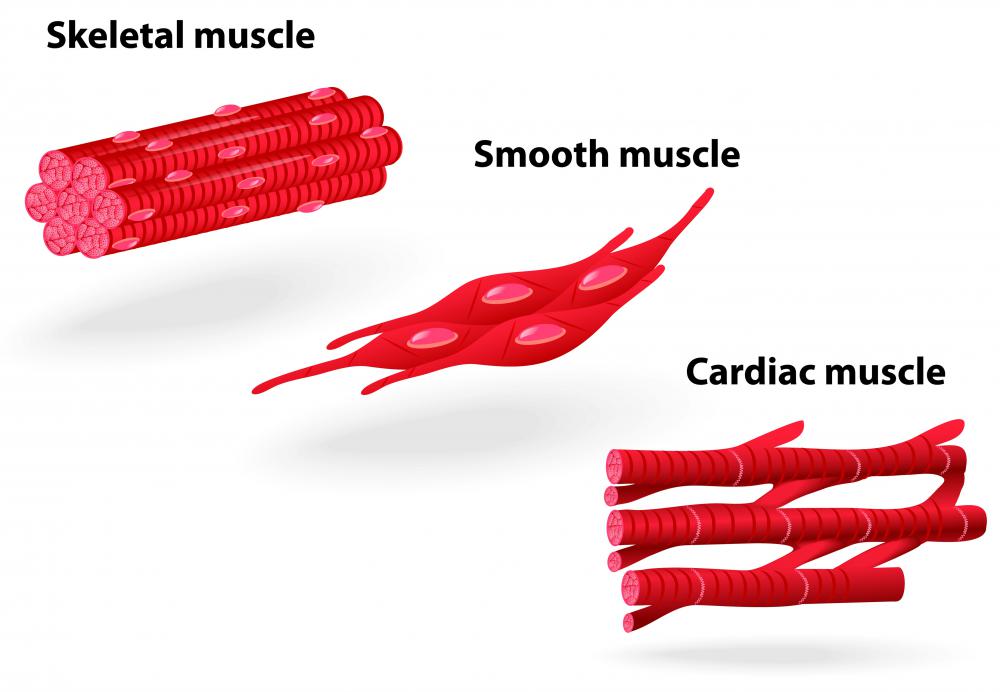At TheHealthBoard, we're committed to delivering accurate, trustworthy information. Our expert-authored content is rigorously fact-checked and sourced from credible authorities. Discover how we uphold the highest standards in providing you with reliable knowledge.
What are the Mechanics of Muscle Movement?
Muscle movement is a biological phenomenon that has only relatively recently come to be fully understood by scientists. A highly complex sequence of events, many taking place on a molecular level, which brings about muscle movement. There are different types of muscles in the body, but only skeletal muscle -- the muscles that move bones and joints -- are controlled voluntarily. Muscles which control the circulatory system and certain organ functions move without our control, and often without us ever noticing.
Skeletal muscles are composed of long, thin cells that are also known as muscle fibers. Each microscopic muscle fiber contains the mechanisms necessary to cause muscle movement on a small scale. Blood vessels and neurons are present in and around bundled groups of muscle fibers, and they provide the energy and the nerve information needed to move the muscle.

Each muscle fiber is itself a bundle of smaller units called myofibrils, where muscle movement originates. Inside each myofibril are strands or filaments made of two different proteins called actin and myosin. These protein strands are anchored to the structure of the myofibril, and lie parallel to each other. When acted upon by a nerve impulse, the protein filaments push past each other, like the oars of a rowboat through water.

The protein filaments are able to do this by using chemical energy derived from a compound known as adenosine triphosphate (ATP). ATP is among the more essential chemicals present in the body. It allows the operation of every muscle, including the heart and the diaphragm, and life would immediately cease without it.
When the myosin and actin filaments move past each other from a relaxed state, the muscle fiber as a whole contracts. When all the cells in a muscle contract in the same direction, the muscle moves the bone it is attached to in that direction. Conversely, when the muscle fibers then relax, the muscle as a whole relaxes also. There are other, very complex chemical reactions which occur, involving calcium and other elements that aid in switching muscle contractions on and off, but the mechanics of muscle movement are carried out by the protein filaments.

Muscles are often grouped in pairs, where a contraction of one muscle moves a bone a certain way, and a contraction of the other muscle moves it the opposite way. This is the case with the biceps and triceps muscles of the upper arm. When an impulse is given by the central nervous system to contract the biceps, a corresponding impulse occurs to relax the triceps, and vice versa. These simultaneous impulses are necessary to allow for freedom of movement in both directions.
AS FEATURED ON:
AS FEATURED ON:













Discussion Comments
excellent explanation. All bodybuilders should know how their tools work.
Fabulous explanation, thanks. it was a great help!
Thanks, great explanation.
exactly what i needed to know for college work.
Post your comments